Follow Us:
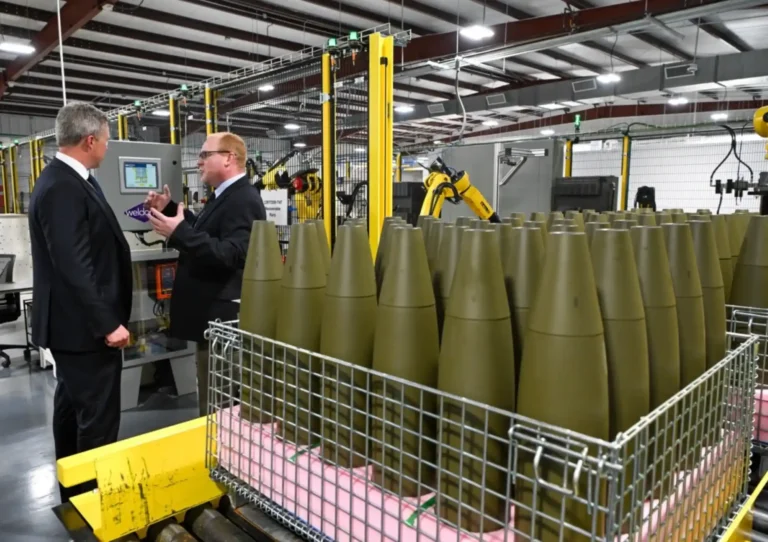
Share
In today’s wars, some weapons are designed not just to defeat enemies—but to leave a lasting impact. One of the most talked-about examples is the thermobaric bomb, a powerful explosive that’s been getting a lot of attention lately, especially in the Russo-Ukraine conflict. Also known as “vacuum bombs”, these weapons are feared for the scale of destruction they can cause and the controversy surrounding their use. So, what is a thermobaric bomb, and why has it become such a critical tool—and concern—on the modern battlefield?
Unlike regular bombs that explode with a simple blast, thermobaric weapons pull in oxygen from the surrounding air to create an intense, high-temperature explosion. The result is a fireball followed by a massive pressure wave that can flatten structures, damage organs, and cause severe oxygen depletion in the area. It’s this combination of heat and pressure that makes them so destructive.

Russia has been reported to use these bombs in Ukraine, and their impact has been hard to ignore—especially in urban areas where the damage can be massive. Their use has raised serious questions about their effects on civilians and whether they cross the line of acceptable warfare.
In this post, we’ll peel back the layers of this fearsome invention—examining how thermobaric bombs work, the science behind their annihilating force, and why they’ve become such a notorious tool in 21st-century conflict.
A thermobaric bomb, also known as a thermobaric weapon, vacuum bomb, or fuel-air explosive, is a type of explosive that uses oxygen from the surrounding air to generate a high-temperature explosion.
Unlike conventional bombs that contain both fuel and oxidizer, thermobaric bombs release an aerosol cloud—made of fuel particles—that mixes with atmospheric oxygen before ignition. This results in a powerful blast followed by a pressure wave that lasts longer and spreads wider than standard explosives.
Because of their oxygen-dependent detonation, they are sometimes also referred to as air-fuel bombs or aerosol bombs. The explosion not only burns intensely but also causes severe oxygen depletion in enclosed or semi-enclosed spaces, making them especially lethal in caves, bunkers, or urban environments. This mechanism is what makes thermobaric bomb effects particularly destructive and difficult to survive—even if one is outside the immediate blast zone.
The concept behind thermobaric weapons can be traced back to World War II, when militaries began experimenting with fuel-air mixtures for explosive purposes. However, the technology remained in its infancy due to limitations in delivery systems and fuel dispersion.
Significant progress came during the Cold War, particularly in the 1960s, when both the United States and the Soviet Union began developing more advanced thermobaric bomb mechanisms. These were designed to penetrate fortifications and destroy enemy personnel hiding in bunkers or tunnels—scenarios where traditional explosives were less effective.
The U.S. military further refined fuel-air explosive technology during the Vietnam War, using it for clearing helicopter landing zones and destroying enemy cover in dense jungles. Meanwhile, the Soviet Union invested heavily in these weapons for use in mountainous regions like Afghanistan, where the terrain made conventional munitions less efficient.
Today, thermobaric weapons in war have evolved significantly, featuring improved precision, larger blast radius, and more sophisticated fuel compositions that increase both lethality and tactical flexibility. Their use has been documented in several major conflicts over the past few decades.
For instance, during the Second Chechen War (1999–2009), Russian forces reportedly used thermobaric bombs like the TOS-1 multiple rocket launcher system in densely populated areas such as Grozny, causing widespread destruction and civilian casualties.
In the Syrian Civil War, Russia and the Syrian government were accused of deploying vacuum bombs in rebel-held territories, especially in Aleppo and Eastern Ghouta between 2015 and 2018, leading to severe humanitarian consequences.
Most recently, the spotlight has shifted to the Russo-Ukraine war, where reports have emerged of Russia using thermobaric weapons since early 2022, particularly during the sieges of Mariupol and Kharkiv.
In March 2022, the Ukrainian ambassador to the United States accused Russia of deploying a TOS-1A thermobaric rocket system, a claim later supported by footage and satellite imagery analyzed by independent observers.
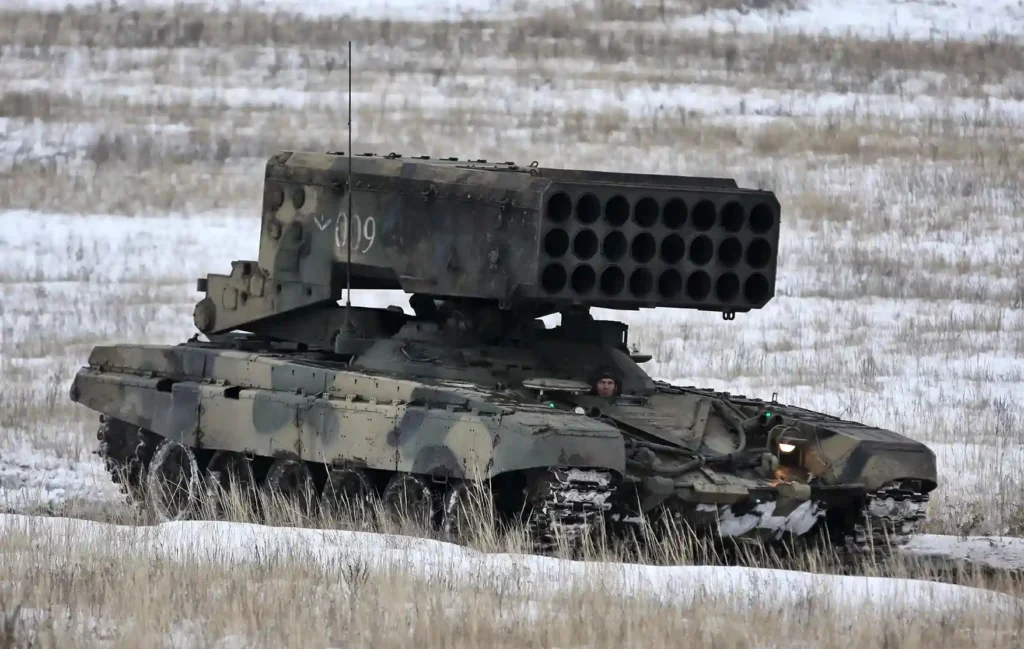
The use of such weapons in urban areas—where oxygen depletion and pressure waves can cause massive civilian harm—has drawn sharp criticism from human rights organizations and raised serious concerns under international humanitarian law.
To understand the full impact of a thermobaric bomb, it’s important to look at how it works on a technical level. Unlike conventional explosives, which rely on an internal oxidizer to detonate, thermobaric weapons operate in two main stages.
In the first stage, the bomb disperses a cloud of fuel—usually a fine aerosol of hydrocarbon-based liquid or metal particles—into the surrounding air. This cloud mixes with ambient oxygen to form a highly explosive vapor.
In the second stage, a secondary charge ignites the cloud, causing a massive high-temperature explosion. The result is an intense pressure wave that expands outward, followed by a rapid oxygen depletion effect that can suffocate anyone within the blast zone.
The lethality of a thermobaric bomb explosion lies in this combination: extreme heat, prolonged overpressure, and lack of breathable air. In enclosed spaces like bunkers, caves, or urban buildings, the effects are magnified. The thermobaric bomb mechanism is designed not just to destroy structures but to incapacitate personnel through sheer thermal and atmospheric force.

While both thermobaric and conventional bombs are designed to cause destruction, their methods and effects are quite different. Traditional explosives contain both fuel and oxidizer within a compact casing, leading to a quick, high-energy burst that delivers an immediate shockwave and fragmentation.
In contrast, thermobaric weapons rely on external oxygen, which allows them to generate longer-lasting and wider-reaching pressure waves. These weapons also produce significantly higher temperatures during detonation—making thermobaric bomb effects more deadly in terms of heat damage.
A conventional bomb may cause structural damage, but a thermobaric bomb can collapse buildings while simultaneously burning and suffocating anyone nearby.
Another key difference is the thermobaric bomb blast radius, which tends to be larger and more adaptable depending on the fuel composition and environmental conditions. Because of their unique design, thermobaric weapons in war are often chosen for missions that require penetrating fortified positions, clearing enclosed spaces, or causing maximum impact in urban environments.
Read also: How Do Bunker Buster Bombs Work?
Thermobaric weapons have proven to be extremely effective in specific military scenarios where traditional explosives are less effective. Their ability to create a powerful high-temperature explosion and pressure wave makes them ideal for urban warfare, bunker busting, and anti-personnel operations.
In urban warfare, thermobaric bombs are particularly useful in targeting entrenched enemy forces hiding in buildings, basements, or underground shelters. The intense heat and pressure waves generated by a thermobaric bomb explosion can flatten entire buildings, and the oxygen depletion effect makes it difficult for survivors to breathe, incapacitating or killing those within range. This ability to clear rooms or buildings in dense city environments makes them invaluable in combat zones where traditional explosives might fail to reach well-protected enemies.
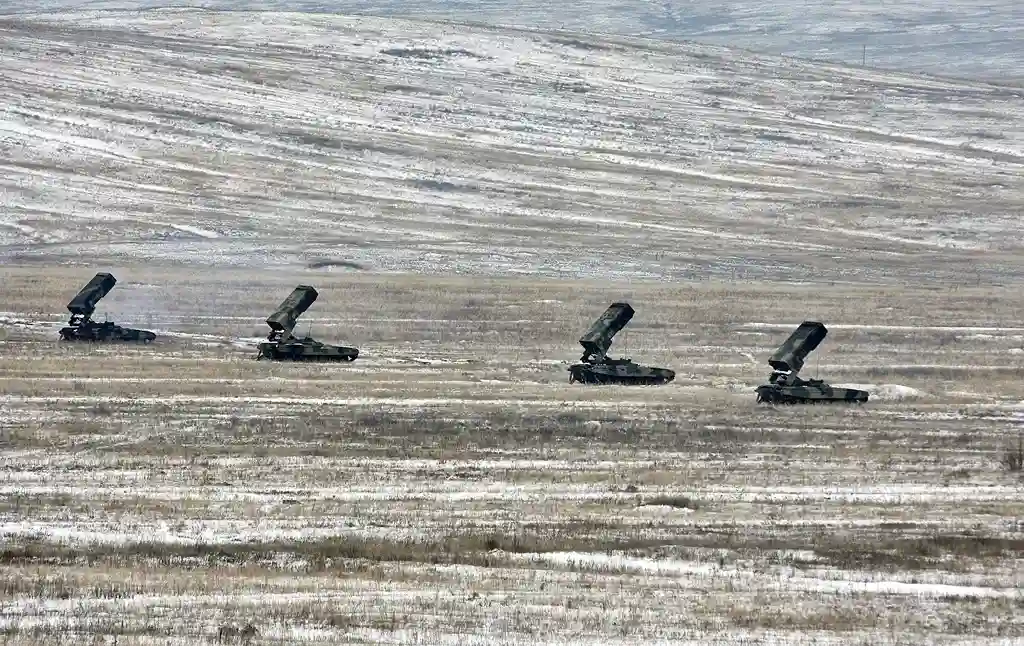
Similarly, thermobaric weapons are also effective in bunker busting—penetrating deep into underground fortifications or cave systems. The massive pressure wave combined with intense heat makes it difficult for structures to withstand the blast. This has made thermobaric bombs a key component in operations targeting high-value targets hidden in difficult-to-reach areas.
In anti-personnel operations, the sheer force and heat generated by fuel-air bombs make them highly effective at disrupting enemy infantry, especially in the context of large-scale ground combat, where it’s essential to break enemy lines or destroy formations quickly.
The tactical advantages of thermobaric weapons have led to their use in several modern conflicts, with one of the most notable being the Russo-Ukraine war. In 2022, Russian forces reportedly deployed the TOS-1A thermobaric rocket system in multiple regions of Ukraine, notably during the siege of Mariupol and in areas surrounding Kharkiv.
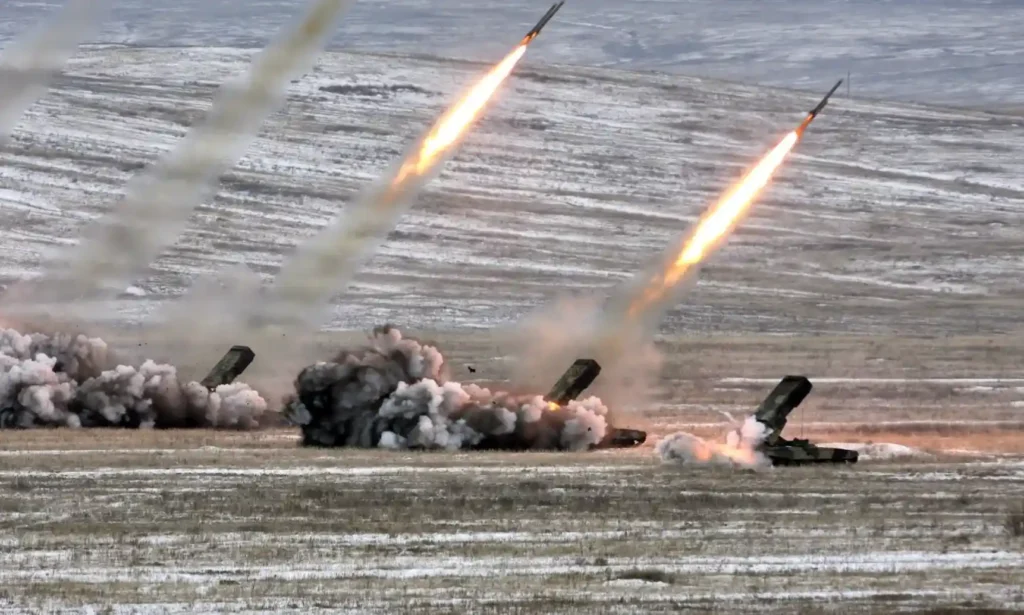
The TOS-1A system, a multiple rocket launcher designed specifically for thermobaric bombs, has been used to deliver devastating strikes in urban environments. Mariupol, a city in southeastern Ukraine, was heavily bombarded with these weapons in March 2022, as Russian forces sought to break the Ukrainian defense and force the city’s surrender. Videos and images of the destruction, as well as satellite images showing the aftermath of the blasts, provided proof of thermobaric bomb usage.
The impact on civilians has been catastrophic. According to reports from Ukrainian officials and independent observers, the use of vacuum bombs in these densely populated areas caused massive destruction, with thousands of casualties and widespread displacement.
The pressure waves and intense heat from the thermobaric bombs led to the collapse of entire buildings and infrastructure, while survivors in the affected areas suffered from severe injuries or asphyxiation due to oxygen depletion.
While the Russian military has not officially confirmed the use of the TOS-1A system, photographic evidence and eyewitness testimonies have been widely circulated, further cementing its deployment in these operations.
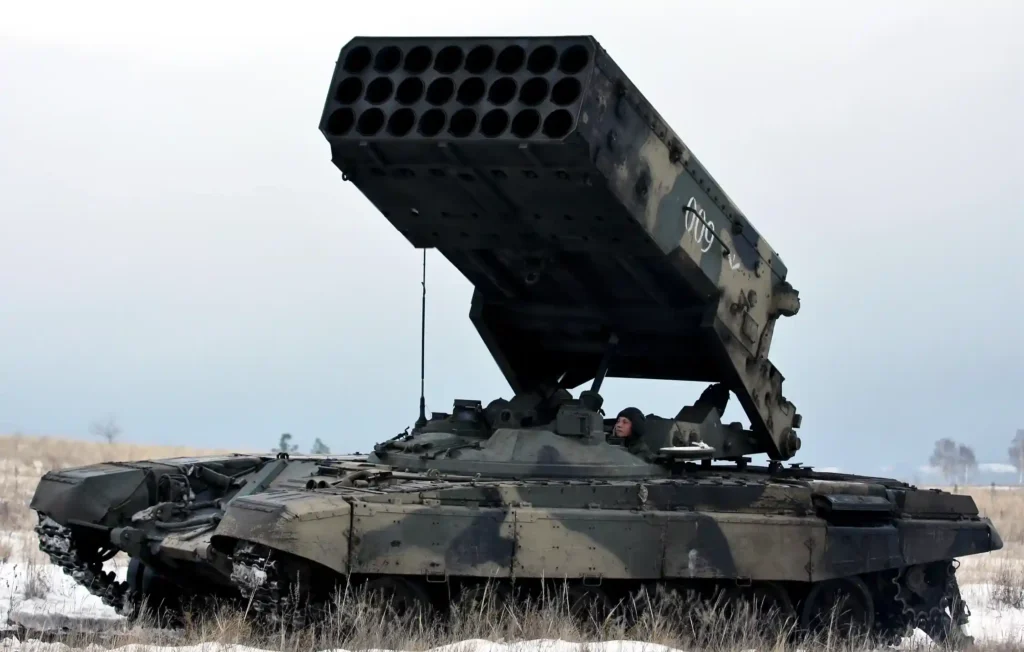
The use of thermobaric weapons in war—especially in populated urban centers—has drawn sharp criticism from the international community, with calls for accountability under international law due to the disproportionate impact on civilians.
The use of thermobaric weapons in modern conflicts raises serious questions under International Humanitarian Law (IHL), particularly regarding their legality in armed conflict. IHL, which governs the conduct of war and aims to protect civilians and combatants who are no longer participating in hostilities, prohibits the use of weapons that cause unnecessary suffering or disproportionate harm.
Thermobaric bombs, with their intense high-temperature explosion and massive pressure waves, can cause indiscriminate damage and extreme civilian casualties. The oxygen depletion effect alone can suffocate entire populations within the blast radius, making it difficult to avoid civilian harm when using these weapons in populated areas. This leads to concerns about violations of the laws of war, as attacks on civilians or civilian infrastructure are explicitly prohibited under the Geneva Conventions and Additional Protocols.
A key aspect of the legal debate centers on whether thermobaric bombs are considered “indiscriminate weapons.” The principle of distinction, which is a cornerstone of IHL, requires parties to a conflict to distinguish between combatants and civilians and to target only military objectives.
Given that thermobaric weapons can level entire buildings and cause massive destruction in urban areas, their use is often seen as a violation of this principle. The pressure wave and subsequent fireball can affect anyone within range, irrespective of their combatant status, potentially breaching IHL’s provisions for minimizing civilian harm.
The use of thermobaric weapons has sparked significant ethical debates, primarily due to their devastating humanitarian impact. Critics argue that the thermobaric bomb effects—which include intense heat, structural collapse, and oxygen depletion—make these weapons morally unacceptable, especially when used in civilian areas. The very nature of these weapons, which can inflict severe suffering on both combatants and civilians, raises fundamental ethical questions about the value of human life in conflict.
One of the key ethical concerns is the disproportionate harm caused by thermobaric bombs. While their tactical advantages in bunker busting or urban warfare may be seen as effective by military planners, they come at the cost of large-scale civilian suffering.
The use of vacuum bombs or fuel-air explosives in cities like Mariupol highlights the dilemma: is the military objective worth the enormous loss of life and the destruction of critical civilian infrastructure?
Human rights organizations, including Amnesty International and the United Nations, have condemned the use of these weapons, arguing that their effects are inhumane and disproportionately affect non-combatants.
Furthermore, there is a growing concern that the use of thermobaric weapons may set a dangerous precedent in modern warfare. As military technology advances, the potential for more devastating and indiscriminate weapons increases. The normalization of such weapons in warfare could lead to further erosion of international norms surrounding the protection of civilians and the ethical conduct of war.
So, What Are Thermobaric Bombs?
Thermobaric bombs—also called vacuum bombs or fuel-air explosives—are weapons that work by using oxygen from the air to create a huge explosion and pressure wave. They spread a fuel cloud, mix it with oxygen, and then ignite it, causing massive heat and a blast that can flatten buildings and even suffocate people in the area due to oxygen depletion.
These bombs have been used in conflicts like the Russo-Ukraine war, where they’ve caused a lot of damage. In the end, thermobaric bombs are powerful weapons that leave a lasting impact, both on the battlefield and on the people caught in the crossfire.
While they can be highly effective in certain military situations, their use brings up important questions about the balance between tactical advantage and the humanitarian cost. As we see more of these weapons in modern conflicts, it’s crucial to keep having conversations about their consequences and the future of warfare.
Share
Defense Feeds is publication focusing on informing, engaging, and empowering the world by providing accurate information from defense technology.
Powered by Defense Feeds © 2025 – All rights reserved.